The French Revolution
Contemporary Events
- 1789 brought bankruptcy for the French government due to the extravagant indulgences of the French Monarchy (namely Louis XV and Marie Antoinette) lead to Revolution in France.
- First Louis XVI attempted to reform the government by gathering representatives to form the Estates General. They abolished feudalism, adopted the Declaration of the Rights of Man and drafted the first written French constitution.
- War broke out in 1792, Parisian rioters overthrew the monarchy and the first French Republic was established.
- 1793 King Louis XV is executed, thus ending the french monarchy.
- 1793-4, the Jacobins lead the “Reign of Terror” targeting the French Nobility. The guillotine was the execution style of choice.
- 1794 The Jacobins were overthrown and a Directoire (five men chosen to run the government) rules France for the next 5 years.
- In England, George III occupied the throne. He weathered the loss of the American colonies in 1776 and periodic bouts with insanity. By 1810, he was declared unfit to rule.
The French Revolution (Late 18th Century)
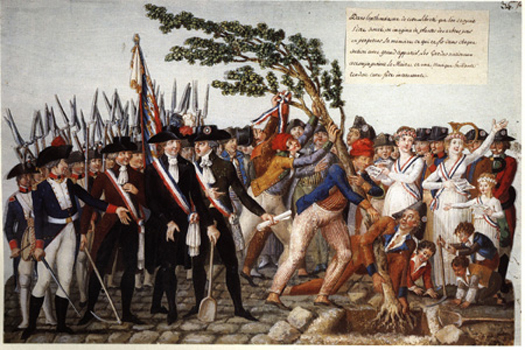
“Planting the Tree of Liberty,” by E. Le Sueur, 1792, French.The Age of Napoleon. Ed. Katell le Bourhis. NY: The Metropolitan Museum of Art / Harry N. Abrams, Inc., 1989. p. 47, pl. 24.
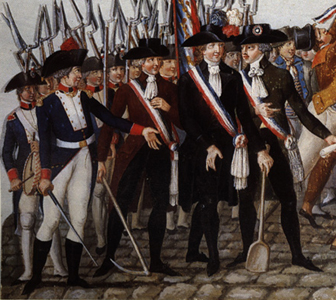
Detail from the painting above
During the French Revolution, citizens were expected to declare their revolutionary support by displaying the appropriate colors: red, white, and blue.
Beginning September 21, 1793, wearing a tricolor ribbon “flower” called a cockade became mandatory. These are commonly displayed on hats (as the figure standing on the right is doing) and lapels. Tricolor ribbon sashes were also a popular accessory.
These obviously upper-class men appear to be sympatizers with the revolutionary cause.
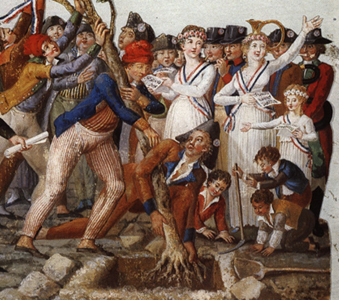
Another detail from the painting above
Here we see different examples of how the colors red, white and blue were incorporated in the revolutionary dress. Notice the bonnets rouges (Center and Left). Considered “red caps of liberty” these were worn only by revolutionaries. They were soft caps similar in shape to Phrygian bonnets (aka. Smurf hats) made of red wool.
Its possible that the gentlemen sporting the bonnets rouges are also wearing carmagnoles. These were short woolen or cloth jackets worn by the sans culottes (revolutionaries). Carmagnoles were often dark in color and reached the hip. They were cut with fullness in the back and were usually worn with a red waistcoat and striped drill trousers.
The ladies in this image are already wearing pseudo Greco-Roman inspired dresses that are not overly different than the chemise a la reine dresses that surface at the end of the Georgian era. Red, white, and blue become popular dress colors.
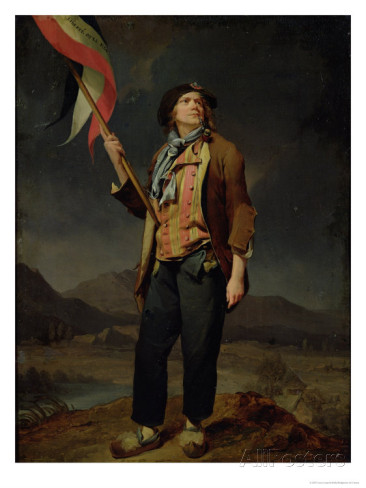
For some time certain elements of male attire take on political significance. The biggest article of clothing signifying revolutionary support is the style of pants worn. The Sans Culottes represented the working class voices in the revolution. “Culotte” is the french word for knee breeches, which were still favored by the fashionable upper class during the Revolution. The phrase translates as “without knee breeches.” Full legged trousers were a working class staple during this time.
Some upper class supporters ditched their knee breeches and adopted trousers in support of the cause of the lower classes. Upper class men who did not sympathize with the revolutionaries continued to wear their knee breeches as a badge of their own alliances. Many wore them straight to the guillotine during the “Reign of Terror”.
Dark dresses for women were fashionable during the “Reign of Terror.”
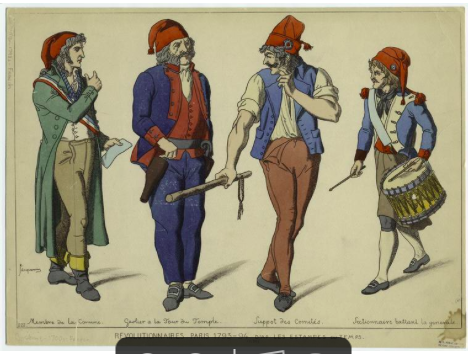
Caption reads: Révolutionnaires Paris 1793-94, Les Estampes du Temps
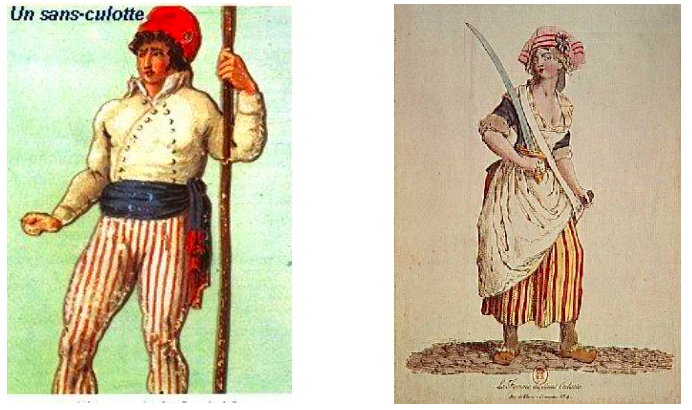
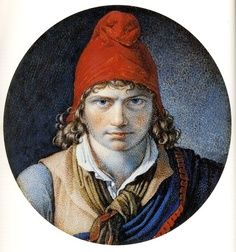
Bonnet Rouge worn by a Revolutionnaire.
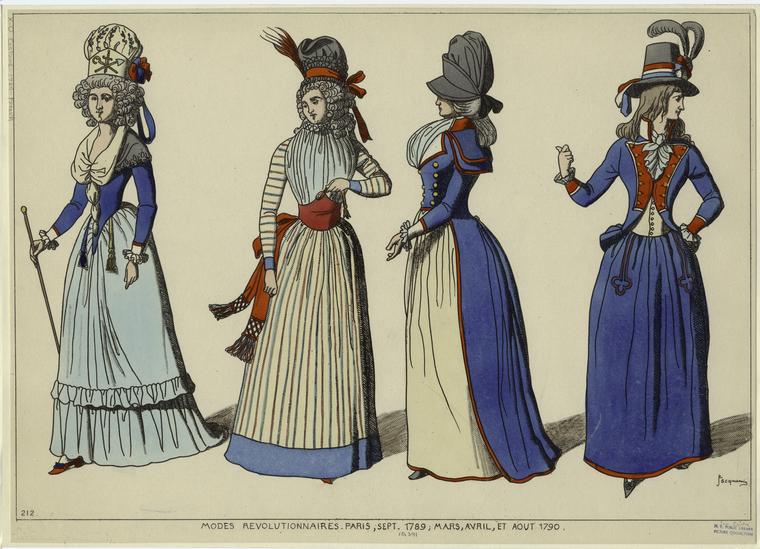
Caption reads: Modes Révolutionnaires Paris. Sept 1789, Mar, Avril et Aout 1790
Recent Comments